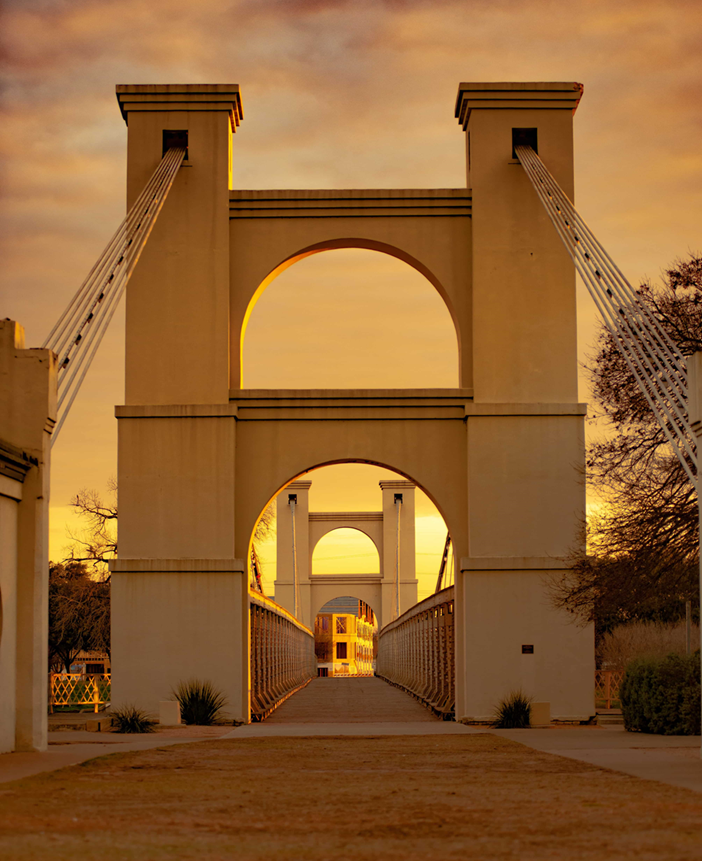Waco, Texas, a community perched along the Brazos River’s banks, with a history as diverse as the Texas terrain itself. Waco’s journey from 1950 to the present is a testament to the resilience of its people and the city’s unwavering spirit, from the devastating tornado of 1953 to the enigmatic story of the Branch Davidians, the Twin Peaks biker shootout, the revitalization of Magnolia, the growth of Baylor University, and economic development.
The Waco Tornado of 1953
A massive tornado crashed into Waco in the early hours of May 11, 1953, leaving a path of damage and sorrow in its wake. This tornado was one of the worst in Texas history, killing dozens of people. This tornado was one of the worst in Texas history, killing 114 people and leaving enormous destruction. Entire neighborhoods were leveled, and the city’s landscape was permanently changed.
The tornado was a terrifying experience for survivors who emerged from the ruins to see the magnitude of the disaster. Homes and businesses were destroyed, and the city’s infrastructure was badly damaged. The neighborhood came together, with neighbors assisting neighbors and strangers providing assistance. In the furnace of that calamity, the spirit of resilience that would come to define Waco in the decades to follow was created.
The city’s reconstruction efforts began immediately, as it attempted to rebuild itself from the ground up. The tragedy acted as a stimulus for progress. The catastrophe acted as a spur for Waco‘s infrastructure and emergency response systems to be modernized, guaranteeing that the city would be better equipped to confront future difficulties.
Media Misrepresentation of Waco Texas Role with the Branch Davidians
When the events surrounding the Branch Davidians at the Mount Carmel Center reached a climax in 1993, Waco‘s status in the public psyche was irreversibly transformed. The religious sect’s charismatic leader, David Koresh, and his followers had been engaged in a lengthy confrontation with federal law enforcement officers in Elk, Texas. The scenario eventually culminated in a devastating inferno, resulting in the loss of many lives.
The media’s coverage of these events, which was sometimes sensational and biased, left a long shadow over Waco, which had the closest airport to the cult’s compound. For years to come, because Waco was the closest large city to the Branch Davidian compound, it was associated with this horrific occurrence. National media portrayed a bleak picture of a city riddled with violence and fanaticism, even though the events did not occur in Waco.
Waco locals, on the other hand, were aware that there was more to their city than meets the eye. They recognized that, while the Branch Davidian epic was a part of their history, it was not the complete story. They also understood that the events of 1993 could not capture the essence and character of their city.
The Twin Peaks Motorcycle Shootout
Waco was catapulted back into the national limelight in 2015, this time as a result of the Twin Peaks motorcycle gunfight. At the Twin Peaks restaurant, a violent clash between rival motorcycle gangs occurred, resulting in several fatalities and injuries. The episode garnered national media attention, and the notion of violence and disorder was reinforced once more.
Waco residents were fully aware that this catastrophe did not characterize their community. They acknowledged that the incident was tragic and isolated, and that the conduct of a few did not reflect the whole community. Following the gunfight, the city banded together to heal, encouraging debates about safety and security as well as the significance of law enforcement and community involvement.
Magnolia and Economic Development
Despite the hurdles and problems, Waco had an economic resurgence, spurred by the creation of Magnolia Market. Chip and Joanna Gaines, makers of the hit TV program “Fixer Upper,” envisioned and realized the makeover of a run-down neighborhood into a thriving retail and dining destination. Magnolia’s success came to symbolize Waco’s dedication to rehabilitation and economic progress.
Magnolia Market brought tourists from all over the country, resulting in an increase in tourism and economic prospects. Local business owners took advantage of the renewed interest in the neighborhood by building restaurants, stores, and other establishments. This restoration poured fresh life into an area of the city that had previously been disregarded.
Baylor University’s Expansion
Baylor University, established in 1845, had long been a component of Waco’s identity. The university evolved in tandem with the city. It extended its academic offerings, athletic activities, and cultural impact, cementing its position as a leading institution of higher learning.
The expansion of Baylor had a profound influence on Waco’s economic and cultural environment. The existence of the university brought an infusion of students, teachers, and resources, boosting the city’s intellectual and cultural offerings. Baylor’s impact went beyond the campus, helping to shape the city’s character and nurturing intellectual and cultural vitality.
A New Waco Texas Narrative
Waco has worked hard in recent years to remove the restrictive narratives that have been imposed on it. The city acknowledged that it was more than a horrible occurrence or a single incident. Wacoans recognized that their city was distinguished by its people, their perseverance, and their will to create a better future.
From 1950 to the present, Waco’s narrative has been one of perseverance and reinvention. The city had difficulties, but it also took advantage of chances for expansion and reinvention. Waco Texas introduced a new story that highlighted its booming cultural institutions, economic prosperity, and educational institutions. This story displayed the genuine spirit of its people, who refused to be defined by the past and were determined to succeed.
Waco Texas pushes on with a feeling of purpose and pride, bringing the lessons of the past and dreams for a greater future with it. The city exists as a tribute to its citizens’ endurance and tenacity, a location where the genuine spirit of Waco is revealed for all to witness.

